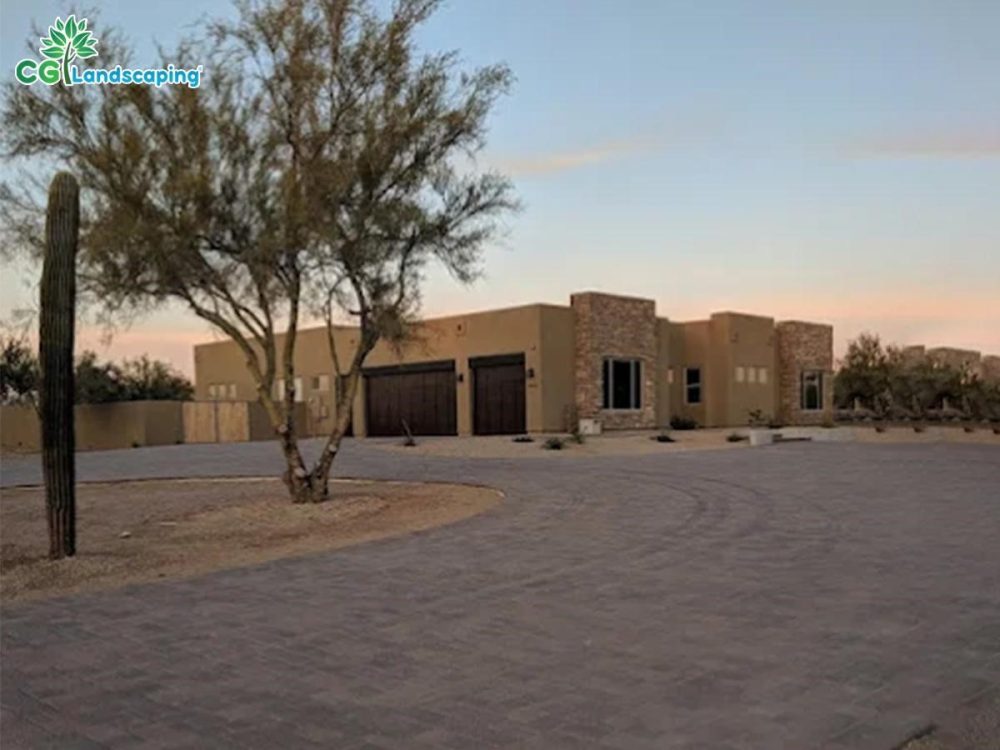You’re walking through your yard when a strange detail stops you. One tree’s leaves are fading—just slightly—but not like the others. The bark seems cracked, maybe even hollow in spots. Was it always like that, or have you just now noticed? Could it be sick… or worse, DYING? And if so, what’s the risk to your home, your safety, or your landscape?
Before you call for Gilbert tree services, you need to know this: not every troubled tree needs to come down. But neglecting it can cost you more than you expect.
So, how can you distinguish? This blog will help you understand what’s really going on with your trees before you make the cut. Let’s unravel the mystery.
Why Healthy Trees Sometimes Look Dead?
You know…it’s common for homeowners to panic when a tree doesn’t leaf out in spring or drops leaves prematurely. But trees don’t operate on exact schedules. Environmental stress, substandard soil, disease, or even drought might cause a tree’s response to slow.
Extreme heat and water shortages regularly drive trees into “survival mode.” They conserve energy, shed unnecessary weight (like leaves), and stop new growth to endure tough conditions.
This is where a careful diagnosis becomes essential—and where the following steps come in.
1. Visual Inspection: What Nature’s Telling You
Before diving into technical tests, start with your eyes. Walk around the tree and observe.
Look for These Signs:
- Bark that’s falling off or cracked
- Mushrooms or fungal growth at the base
- No visible buds during the growing season
- Sudden lean or branch drop
If the structure appears weak, the issue could be deeper than it looks. This is usually a warning sign for homeowners, particularly with the change of season.
2. The Scratch Test: Fast, Easy, and Powerful
Slip back a little piece of bark with a knife or fingernail. If the layer beneath is green and moist, your tree has life. If dry, brittle, or brown—something’s wrong.
Do this on multiple parts of the tree. It’s possible for one limb to be dead while others remain alive.
This simple test is often the first thing professionals offering tree services in Gilbert do during a tree health check.
3. Leaf and Bud Patterns: What’s Growing (or Not)?
Healthy leaves or breaking buds should be visible in spring and early summer. Thin, wilted, or deformed leaves generally indicate disease or drought stress.
Property managers using tree services often monitor leaf patterns closely, especially on large commercial grounds, where the health of trees affects curb appeal and liability.
4. Structural Integrity: Beyond the Surface
Some trees rot from the inside out. You might not notice anything wrong until limbs start falling or the entire trunk leans. Check for:
- Hollow sounds when tapped
- Large cavities
- Splits in limbs or the trunk
These are serious signs of decay. Call a pro before it becomes a danger.
5. Underground Issues: What the Roots Reveal
While the branches are easy to notice, the roots are frequently the true culprit. Overwatering, soil compaction, root girdling, or rot can all debilitate a tree from the underside.
Symptoms of root issues:
- Sudden leaf loss
- Leaning tree
- Fungus near the trunk
This is where professionals dig deeper—sometimes literally—to determine the cause and the cure.
6. Pest and Disease Damage: Invisible Threats
Arizona trees are no strangers to pests like borers, aphids, and beetles. Infections and infestations often appear as:
- Holes in bark
- Sticky sap
- Black mold or mildew on leaves
Firms providing landscape design services usually perform routine pest inspections to protect not just your trees, but your entire yard ecosystem.
7. Seasonal and Environmental Stress
During the desert climate, trees will sometimes “shut down” because of heat, drought, or even unexpected cold snaps. This causes a healthy tree to look dead for several weeks.
Don’t remove just because it’s taking so long to recover. Tree care professionals regularly modify irrigation routines and pruning schedules in order to assist trees throughout these periods of stress.
Conclusion: When in Doubt, Don’t Chop—Check First
You don’t need to be a certified arborist to feel when something’s amiss with your tree—but with the right choice often comes professional advice. If your tree is not displaying signs of life, don’t worry. Call Gilbert tree service for a proper assessment.
After all, that seemingly dead tree might just need time, care, or treatment—not a chainsaw. And by holding off on a hasty removal, you might just save a beautiful, mature part of your landscape. And if it comes to pruning, treatment, or even stump removal services… getting the right diagnosis first can save time, money, and your favourite tree.
Still wondering if it’s time to leave it alone or cut it down? The next move is yours—but make sure it’s informed.
